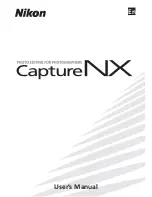
Glossary
297
DTD
Document Type Definition. Specification that defines the rules of a Standard
Generalized Markup Language (SGML) language; for example, its tags and required
attributes and allowed values for its tags. A DTD complies to the rules of SGML, and
enables an SGML compiler to correctly handle documents of the type it defines.
embedded style
See CSS.
encoding
Format that defines how the values of certain types are represented, in terms of bits.
Examples: American Standard Code for Information Interchange (ASCII), a 7-bit
character set; and Unicode, a 16-bit character set.
entity name
Also known as an
entity reference
. Code for a special or extended character. Entity
names prevent browsers from misinterpreting these characters. For example, the
lesser than and greater than signs (<, >) are used to form tags in the code. Using the
entity names
<
and
>
instead of < and > prevents browsers from interpreting
the characters as tag brackets.
FTP
The File Transfer Protocol (FTP) defines an Internet standard for transferring files
between two computers over a given network.
GIF
Graphic Interchange Format. Type of image file (.gif ) that has a small file size but less
detail than PNG and JPG files. PNG files also have a smaller file size than GIF files, but
do not support animation. GIFs are perfect for animated graphics, and are fine for
simple images that need to download quickly onto a user’s computer.
host name
Name of a computer that has full two-way access to other computers on the Internet.
HTTP
Hypertext Transfer Protocol. Enables transfer of text in hypertext form, such as text
written in HTML. HTTP servers manage the traffic of HTTP requests and responses.
(Users make an HTTP request every time they enter a URL beginning with http://.)
hyperlinks
See links.
image map
Image with more than one associated link. For example, a corporate home page
could have an image of a site map. Users could click different parts of the site map
image to display different sections of the corporate Web site.
Содержание ColdFusion Server 5
Страница 18: ...xviii About This Book...
Страница 26: ...8 Chapter 1 Setting Up the Product...
Страница 42: ...24 Chapter 2 Configuring Browsers and Servers...
Страница 60: ...42 Chapter 3 Exploring the Workspace...
Страница 100: ...82 Chapter 6 Editing Pages...
Страница 126: ...108 Chapter 7 Using Web Development Languages...
Страница 212: ...194 Chapter 13 Customizing the Development Environment...
Страница 320: ...302 Glossary...














































